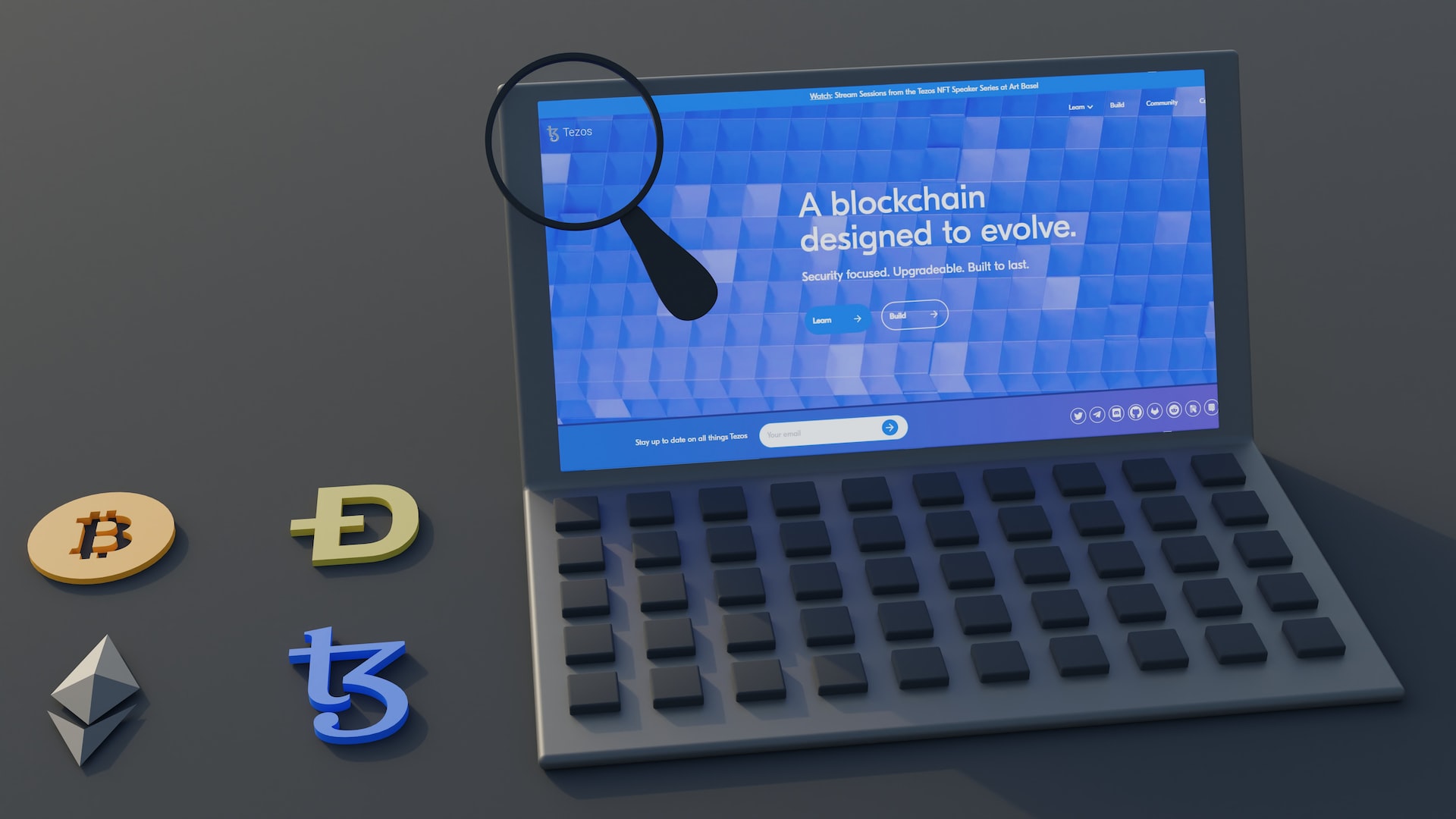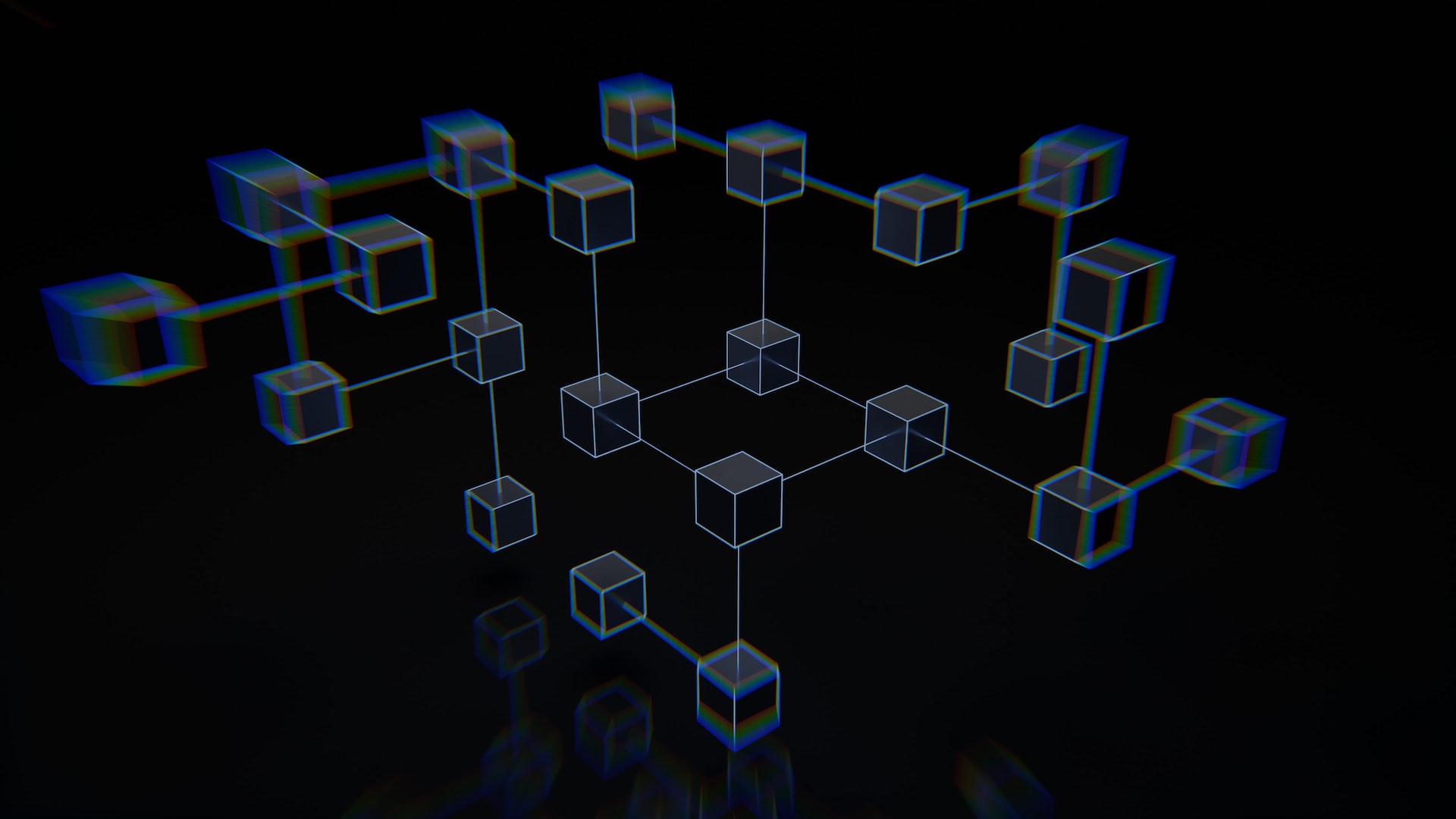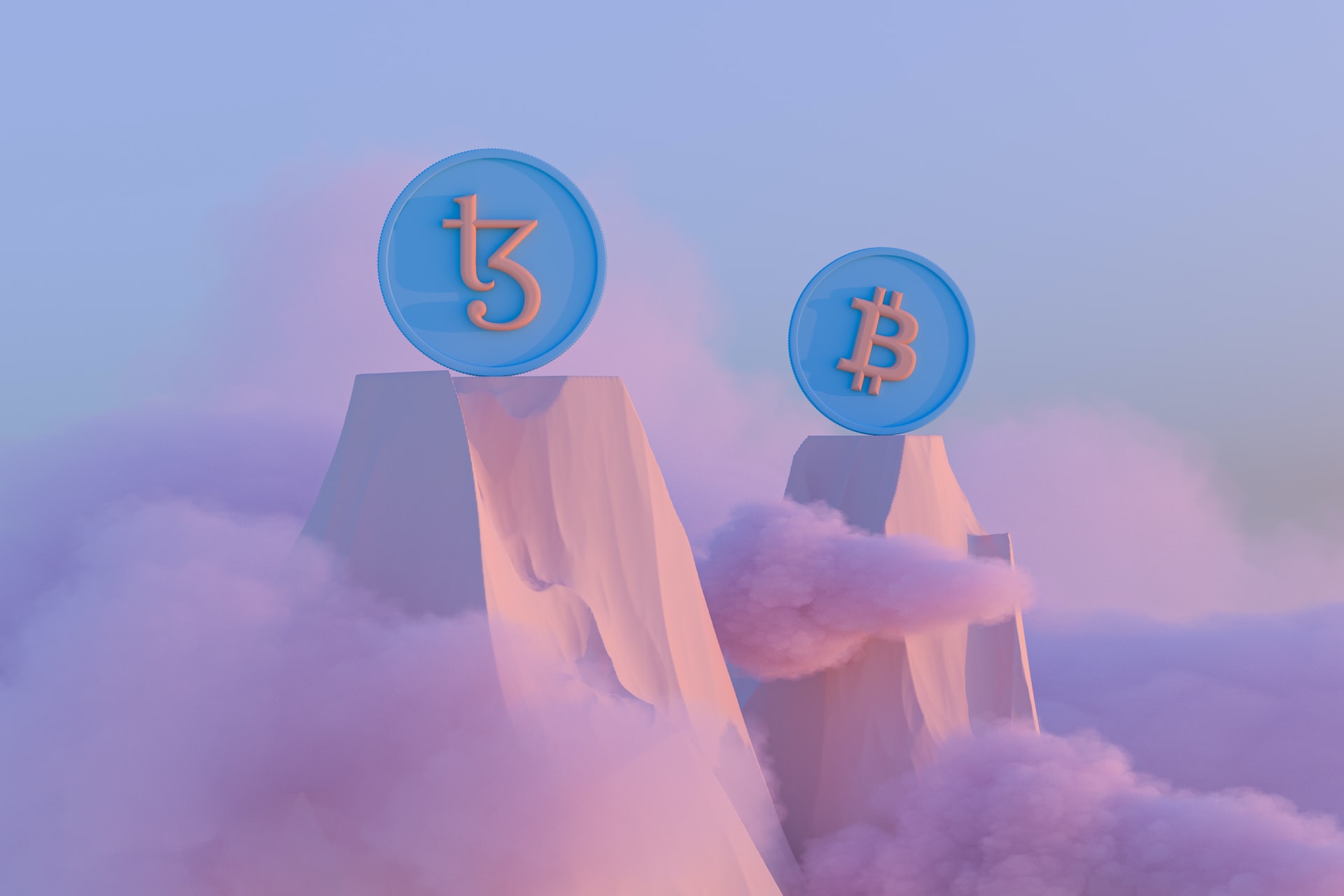What Is a Blockchain?
KEY TAKEAWAYS
How Does a Blockchain Work?
Transaction Processing Blockchain Cryptocurrency Features
Blockchain Decentralization
Transparency
Is Blockchain Secure?
Bitcoin vs. Blockchain
Blockchain vs bank
How Are Blockchains Used?
How is blockchain used in banking and finance?
Currency
Blockchain is the foundation for cryptocurrencies such as Bitcoin. The Federal Reserve controls the US currency. A user's data and cash are theoretically at the mercy of their bank or government under this central authority structure. If a user's bank gets hacked, the client's personal information is compromised. The value of the client's money may be jeopardised if their bank fails or if they live in a nation with an uncertain government. Several insolvent banks were bailed out using government money in 2008. These are the concerns that led to the creation and development of Bitcoin.
Blockchain lets Bitcoin and other cryptocurrencies to function without the need for a central authority by distributing its activities over a network of computers. This decreases risk while also eliminating numerous processing and transaction expenses. It can also provide those in countries with unstable currencies or financial infrastructures with a more stable currency with more applications and a larger network of persons and organisations with whom they can do domestic and international commerce.
Using bitcoin wallets for savings accounts or payment is especially important for individuals who do not have state identity. Some nations may be in the midst of a civil war or have administrations that lack the necessary infrastructure to offer identification. Citizens of such nations may lack access to savings or brokerage accounts, and hence no means of safely storing wealth.
Healthcare
Healthcare providers may use blockchain to securely keep medical records for their patients. When a medical record is created and signed, it may be stored on the blockchain, giving patients proof and assurance that the record cannot be altered. These personal health records might be encoded and kept on the blockchain with a private key, making them available only to certain persons and maintaining privacy.
Property Documents
 If you've ever visited your local Recorder's Office, you'll be aware that the process of documenting property rights is both time-consuming and inefficient. A tangible deed must now be presented to a government employee at the local recording office, who manually enters it into the county's central database and public index. Property claims must be reconciled with the public index in the event of a property dispute.
If you've ever visited your local Recorder's Office, you'll be aware that the process of documenting property rights is both time-consuming and inefficient. A tangible deed must now be presented to a government employee at the local recording office, who manually enters it into the county's central database and public index. Property claims must be reconciled with the public index in the event of a property dispute.This method is not only expensive and time-consuming; it is also prone to human mistake, with each inaccuracy making property ownership monitoring less efficient. Blockchain has the ability to remove the necessity for document scanning and physical file tracking at a local recording office. Property owners can have confidence that their deed is accurate and permanently documented if it is kept and validated on the blockchain.
It can be virtually hard to verify property ownership in war-torn nations or locations with little to no government or banking infrastructure, and certainly no Recorder's Office. If a group of individuals living in such a region can use blockchain, then property ownership time lines may be constructed in a transparent and unambiguous manner.
Intelligent Contracts
A smart contract is a piece of computer code that may be embedded in the blockchain to help facilitate, verify, or negotiate a contract agreement. Smart contracts function under a set of agreed-upon conditions. When certain requirements are satisfied, the agreement's provisions are immediately implemented.
Assume a potential renter wants to lease an apartment using a smart contract. The landlord agrees to provide the renter with the apartment's door code as soon as the tenant pays the security deposit. Both the renter and the landlord would transmit their respective shares of the agreement to the smart contract, which would save the door code and immediately swap it for the security deposit on the lease start date. If the landlord fails to provide the door code by the lease expiration date, the smart contract returns the security deposit. This would avoid the expenses and processes involved with using a notary, a third-party mediator, or attorneys.
Chains of Supply
Suppliers, like IBM Food Trust, may utilise blockchain to track the provenance of products they acquire. This would allow businesses to validate not only their own products, but also common labels like "Organic," "Local," and "Fair Trade."
According to Forbes, the food sector is rapidly utilising blockchain technology to monitor the course and safety of food along the farm-to-user journey.
Voting As previously stated, blockchain technology might be utilised to assist a contemporary voting system. Voting using blockchain has the potential to reduce election fraud while increasing voter turnout, as demonstrated in the November 2018 midterm elections in West Virginia.
Using blockchain in this manner would make tampering with votes almost difficult. The blockchain protocol will also ensure transparency in the electoral process by lowering the number of people required to conduct an election and giving officials with near-instant results. This would eliminate the need for recounts and any serious possibility of electoral fraud.
The Benefits and Drawbacks of Blockchain
The removal of human intervention in verification improved accuracy.
Cost savings from removing third-party verification
Decentralization makes it more difficult to mess with.
Transactions are safe, confidential, and quick.
Technology that is transparent
Gives inhabitants of nations with unstable or undeveloped governments a financial option and a mechanism to safeguard personal information.
Cons Significant technical costs are linked with bitcoin mining.
Transactions per second are low.
Use in illegal operations, such as on the dark web, in the past
Regulation varies by jurisdiction and is still in flux.
Data storage constraints
Blockchain Advantages
Chain Accuracy Transactions on the blockchain network are validated by a network of thousands of computers. This eliminates practically all human involvement in the verification process, resulting in reduced human error and a more accurate record of data. Even if a machine on the network committed a computational error, it would only affect one copy of the blockchain. That error would have to be made by at least 51% of the network's computers for it to spread to the remainder of the blockchain, which is nearly impossible for a vast and expanding network like Bitcoin's.
Cost-cutting measures
Customers typically pay a bank to authenticate a transaction, a notary to sign a document, or a priest to execute a marriage ceremony. Blockchain eliminates the need for third-party verification, as well as the expenses connected with it. Business owners, for example, pay a tiny fee whenever they accept credit card payments because banks and payment-processing businesses must handle the transactions. Bitcoin, on the other hand, lacks a centralised authority and offers low transaction costs.
Decentralization
Blockchain does not keep any of its data in a centralised location. Rather, the blockchain is replicated and distributed over a network of computers. Every computer in the network updates its blockchain whenever a new block is added to the blockchain. Blockchain becomes more difficult to manipulate with by disseminating that information over a network rather than holding it in a single central database. If a hacker obtained a copy of the blockchain, just a single copy of the information, rather not the whole network, would be compromised.
Transactions that are efficient
Transactions processed by a central authority might take several days to settle. If you try to deposit a check on Friday evening, for example, the cash may not appear in your account until Monday morning. Unlike financial institutions, which operate during business hours, often five days a week, blockchain operates 24 hours a day, seven days a week, and 365 days a year. Transactions may be done in as little as 10 minutes and are secure within a few hours. This is especially important for cross-border transactions, which often take substantially longer due to time zone differences and the fact that all parties must confirm payment processing..
Transactions Between Individuals
Many blockchain networks function as public databases, which means that anybody with an Internet connection may access the network's transaction history. Although users may view transaction data, they cannot view identifying information about the people who made those transactions. It is a popular misconception that blockchain networks, such as bitcoin, are anonymous, whereas they are just secret.
When a user conducts a public transaction, their unique code—referred to before as a public key—is stored on the blockchain. Their personal information, however, is not. If a person buys Bitcoin on an exchange that needs identification, their identity is still connected to their blockchain address—but a transaction, even if attached to a person's name, does not divulge any personal information.
Transactions that are secure
Once a transaction is recorded, the blockchain network must validate its legitimacy. Thousands of computers on the blockchain race to certify that the purchase data are correct. The transaction is added to the blockchain block once it has been verified by a machine. Each block on the blockchain has its own unique hash, as well as the unique hash of the previous block. When the information on a block is changed in any manner, the hash code of that block changes; nevertheless, the hash code of the block after it does not. This disparity makes it incredibly difficult to update information on the blockchain without being noticed.
Transparency
Transactions that are secure
Once a transaction is recorded, the blockchain network must validate its legitimacy. Thousands of computers on the blockchain race to certify that the purchase data are correct. The transaction is added to the blockchain block once it has been verified by a machine. Each block on the blockchain has its own unique hash, as well as the unique hash of the previous block. When the information on a block is changed in any manner, the hash code of that block changes; nevertheless, the hash code of the block after it does not. This disparity makes it incredibly difficult to update information on the blockchain without being noticed.
Banking the Unbanked
Perhaps the most significant aspect of blockchain and Bitcoin is the potential for anybody to utilise it, regardless of ethnicity, gender, or cultural background. According to the World Bank, an estimated 1.7 billion individuals lack bank accounts or any other method of keeping their money or wealth.
Almost many of these people reside in developing nations, where the economy is still in its infancy and is totally based on cash.
These folks frequently make a small amount of money in cash. They must then conceal this actual currency in their homes or other places of residence, leaving them vulnerable to robbery or unwarranted violence. Keys to a bitcoin wallet can be written down, preserved on a piece of paper, or even remembered if required. Most people's alternatives are likely to be more readily hidden than a little pile of cash under a mattress.
Blockchains of the future are also searching for ways to store medical information, property rights, and a range of other legal contracts in addition to serving as a unit of account for wealth storage.
Drawbacks of Blockchains
The Price of Technology
Although blockchain technology can save customers money on transaction costs, it is far from free. The PoW mechanism, for example, which the bitcoin network employs to validate transactions, requires enormous amounts of processing resources. In the actual world, the electricity consumed by the bitcoin network's millions of computers is comparable to what Norway and Ukraine spend yearly.
Despite the expenses of mining bitcoin, consumers continue to push up their power bills in order to confirm blockchain transactions. This is due to the fact that when miners add a block to the bitcoin blockchain, they are paid with enough bitcoin to make their efforts profitable. Miners will need to be compensated or otherwise encouraged to validate transactions on blockchains that do not employ cryptocurrencies.
Some solutions to these problems are emerging. Bitcoin mining farms, for example, have been set up to utilise solar electricity, surplus natural gas from fracking sites, or wind farm power.
Inefficiency in Data and Speed
Bitcoin is an excellent case study for blockchain's potential inefficiencies. A new block is added to the network by Bitcoin's PoW mechanism in around 10 minutes.
At such rate, the blockchain network is predicted to be capable of only seven transactions per second (TPS). Although other cryptocurrencies, such as Ethereum, outperform bitcoin, they are still constrained by the blockchain. Visa, for example, has a processing capacity of 65,000 TPS.
For years, people have been working on solutions to this problem. There are presently blockchains with more than 30,000 TPS.
Another difficulty is that each block can only carry a certain amount of data. The block size argument has been and continues to be one of the most urgent challenges for blockchain scalability in the future.
Illegal Behavior
While blockchain network confidentiality protects users from hackers and maintains privacy, it also allows for unlawful trade and activities on the blockchain network. The Silk Road, an online dark web illegal-drug and money laundering bazaar that operated from February 2011 until October 2013, when it was shut down by the FBI, is possibly the most referenced example of blockchain being used for unlawful activities.
By utilising the Tor Browser and making illicit purchases in Bitcoin or other cryptocurrencies, users may buy and sell illegal things without being tracked on the black web. Current rules in the United States require financial service providers to acquire information about their clients when they create an account, verify each customer's identification, and check that they do not appear on any list of known or suspected terrorist groups.
This method has both advantages and disadvantages. It allows anybody to access financial accounts, but it also makes it easier for criminals to trade. Many have claimed that the beneficial applications of cryptocurrency, such as banking for the unbanked, outweigh the undesirable uses of cryptocurrency, especially as most unlawful behaviour is still carried out using untraceable cash.
While Bitcoin was first utilised for such reasons, its transparency and maturity as a financial asset has resulted in criminal behaviour shifting to other cryptocurrencies such as Monero and Dash.
Illegal conduct now accounts for a very tiny percentage of all Bitcoin transactions.
Regulation
Many people in the cryptocurrency community are concerned about government regulation of cryptocurrencies. While it is becoming increasingly difficult, if not impossible, to stop a decentralised network like Bitcoin, governments may conceivably make it illegal to hold cryptocurrencies or participate in their networks.
As huge corporations like PayPal begin to enable the ownership and usage of cryptocurrencies on their platform, this issue has diminished.
In Simple Terms, What Is a Blockchain?
A blockchain is just a shared database or ledger. Data is stored in data structures called blocks, and each network node has an identical clone of the complete database. Because if someone tries to amend or remove an entry in one copy of the ledger, the majority will not reflect this modification and will reject it, security is assured.
How Many Blockchains Exist?
What Is the Distinction Between a Private and a Public Blockchain?
A public blockchain, also known as an open or permissionless blockchain, is one in which anybody may freely join the network and set up a node. Because of their open nature, these blockchains require encryption and a consensus technique like as proof of work (PoW).
In contrast, a private or permissioned blockchain needs each node to be vetted before joining. Because nodes are trusted, the levels of security do not need to be as strong.
What Is a Blockchain Platform?
However, the Ethereum blockchain enables the development of smart contracts, programmable tokens used in initial coin offerings (ICOs), and non-fungible tokens (NFTs). These are all built around the Ethereum technology and safeguarded by Ethereum network nodes.
Who Created the Blockchain?
Stuart Haber and W. Scott Stornetta, two mathematicians who aimed to design a system where document timestamps could not be manipulated with, proposed blockchain technology in 1991.
Nick Szabo, a cryptographer, suggested utilising a blockchain to secure a digital payment system known as bit gold in the late 1990s (which was never implemented).
In conclusion
With numerous practical uses for the technology currently in place and being researched, blockchain is now creating a name for itself, thanks in large part to bitcoin and cryptocurrencies. As a buzzword on the lips of every investor in the country, blockchain has the potential to make corporate and government processes more precise, efficient, secure, and cost-effective by eliminating middlemen.
As we enter the third decade of blockchain, the issue is no longer if older organisations will embrace the technology, but when. Today, we see the growth of NFTs and asset tokenization. Blockchain will experience significant expansion in the coming decades.



.png)














